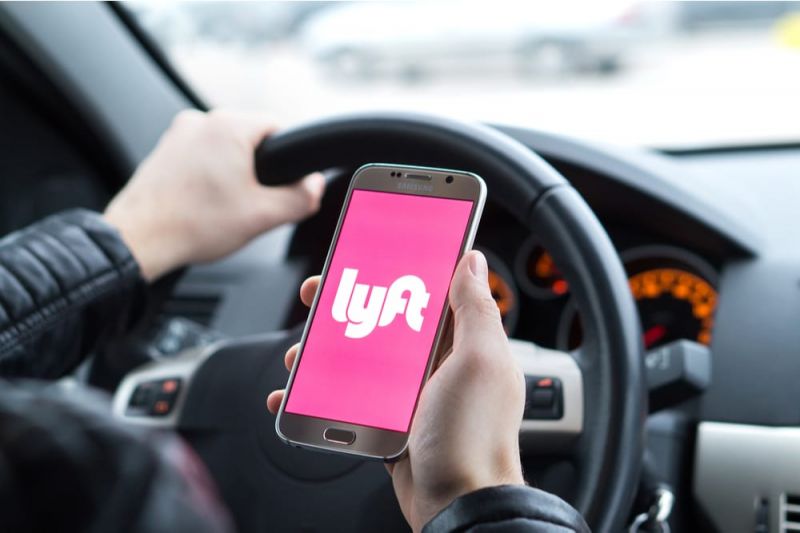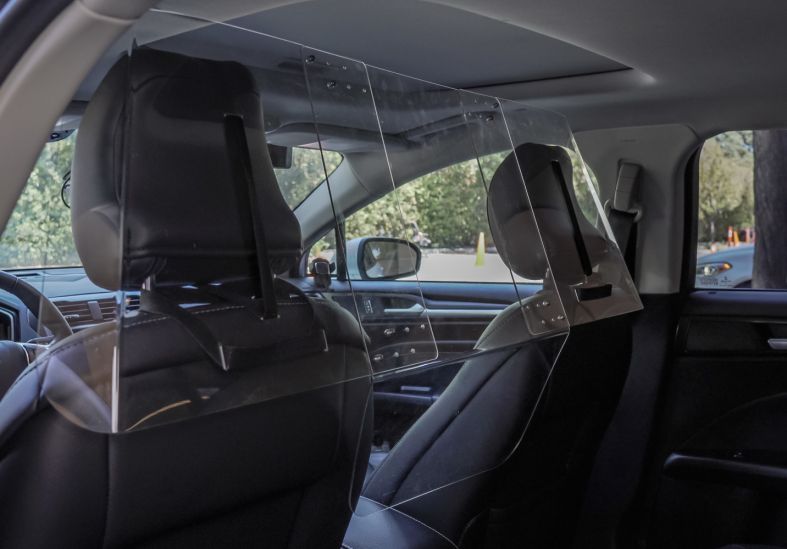Lyft is Providing Protective Shields to its Drivers for Added Safety During the Pandemic
【Summary】San Francisco-based ride-sharing company Lyft is providing its drivers with shields, which are designed to partition the vehicle to limit the chances of virus exposure for the rear seat passengers and driver.

The global coronavirus pandemic has hit ride-sharing companies especially hard. In the U.S., the two biggest companies Uber and Lyft experienced double-digit declines in ridership as people stay at home and practice social distancing.
To help make it safer to travel by car, San Francisco-based ride-sharing company Lyft is providing its drivers with shields, which are designed to partition the vehicle to limit the chances of virus exposure for the rear seat passengers and driver.
The clear plastic partitions are designed to be installed between the front and rear seats, creating a transparent wall between the front and rear seats. It's similar to the more rigid plexiglass dividers many city taxi cabs have in place, such as in New York City.
CDC guidelines recommend that rideshare drivers wear face coverings, keep hands clean, and frequently disinfect surfaces in their vehicles. The CDC also recommends using vehicles with partitions to help maintain distance between drivers and riders, when available.

Lyft's partition is designed to protect both driver and passengers from COVID19 exposure and it's part of the CDC's guidelines for ride-share vehicles.
Lyft began offering the shields earlier this month to its frequent drivers, as well as those in the company's Express Drive rental program, in the cities of Atlanta, Denver and Baltimore.
The company says it received positive feedback for drivers about the new safety measure, so it's making tens of thousands of partitions available to U.S. drivers for free, with the goal of providing 50% ride coverage in these markets.
Lyft plans to expand the use of the acrylic partitions to 30 regions and provide them to as many 60,000 drivers over the next few months.
"Our community is counting on us to put their health and safety first," said Angie Westbrock, VP of Global Operations and Head of Lyft's COVID-19 Response Task Force. "By prioritizing the wellbeing of our drivers, our entire community gains extra peace of mind. We're setting the bar for health and safety in rideshare and will continue to expand our programs and products to continue raising that bar."
The shields are universal and fit most vehicle models. Each shield comes with instructions on how to install it in the vehicle using only basic tools, including a Phillips screwdriver, wrench and measuring tape. The shields attach with velcro around the front seat headrests, so it can be easily removed if desired.
Lyft created this short video for its driver's on how to install the protective shields:
Lyft recently launched its "Health Safety Program", which is based on CDC guidelines. The program includes a personal health certification that requires all riders and drivers to self-certify that they are symptom-free, will wear face masks throughout the ride, and will follow CDC and local health official guidelines in order to request a ride or drive with Lyft, as well as driver and rider education.
Since March, Lyft has provided face masks and cleaning supplies to drivers across North America The company said it distributed over 150,000 sanitizing products and masks to its drivers so far. Lyft's most active drivers on the platform receive a free safety kit, consisting of a reusable cloth face covering, sanitizer and disinfectant.
However all of Lyft's drivers also have the ability to purchase additional personal protection equipment (PPE), including disposable and reusable masks, sanitizer and disinfectant at low cost. Lyft said it does not make any profit from the sale of the safety items and sells them at cost.
Despite the new safety measures, Lyft and its main rival Uber have experienced a significant decrease in ridership since the pandemic beagan in March. Lyft said its May that trip requests on its platform rose around 26% from its lowest point in April at the peak of the shelter-in-place orders, but are still 70% down from May 2019 levels.
-


Ford is Testing a New Robotic Charging Station to Assist Drivers of EVs With Disabilities
-


Ford Raises the Prices of the F-150 Lightning Electric Pickup Due to Rising Raw Material Costs
-


The BMW 7-Series to Feature HD Live Maps From HERE Technologies for Hands-Free Highway Driving in North America at Speeds up to 80 MPH
-


AutoX to Use the 'Eyeonic Vision Sensor' from California-based SiLC Technologies for its Robotaxi Fleet in China
-


LG Develops ‘Invisible’ Speaker Sound Technology That Could Revolutionize In-Vehicle Audio
-


Researchers at South Korea’s Chung-Ang University Develop a ‘Meta-Reinforcement’ Machine Learning Algorithm for Traffic Lights to Improve Vehicle Throughput
-


Zeekr’s New 009 Electric Passenger Van is the World’s First EV to Feature CATL’s Advanced ‘Qilin’ Battery With a Range of 510 Miles
-


Redwood Materials is Building an Electric Vehicle Battery Recycling Facility in South Carolina
- Tesla’s Model 3 is Reportedly Getting a Redesign to Make it More Appealing as Competition in the EV Segment Grows
- Tesla Rival XPeng Inc. to Start Deliveries of its New Flagship G9 Electric SUV in September, CEO Confirms After Sharing New Details
- General Motors is Building a Coast-to-Coast DC Fast EV Charging Network in the U.S. in a New Partnership with Travel Center Operator Pilot Company
- GM to Invest $81 Million to Hand-Build Cadillac Celestiq in Michigan
- California’s Electric Vehicle Sales for Q1-Q3 2022 Show That Tesla is Facing Growing Competition
- FCA to Pay $300 Million Fine for Emissions-Cheating Vehicles
- China Added 963,000 Electric Vehicle Charging Piles Since January in its Push to Lead the World in EV Sales
- Rivian Discontinues Base Model for R1S, R1T
- J.D. Power Study Finds That EVs Are More Problematic Than ICE Cars
- General Motors Announces a Key North American Nickel Supply Deal for Electric Vehicle Batteries











 About Us
About Us Contact Us
Contact Us Careers
Careers